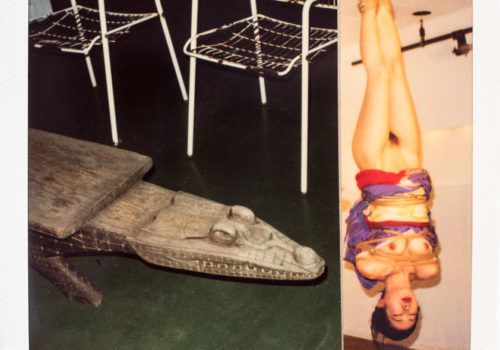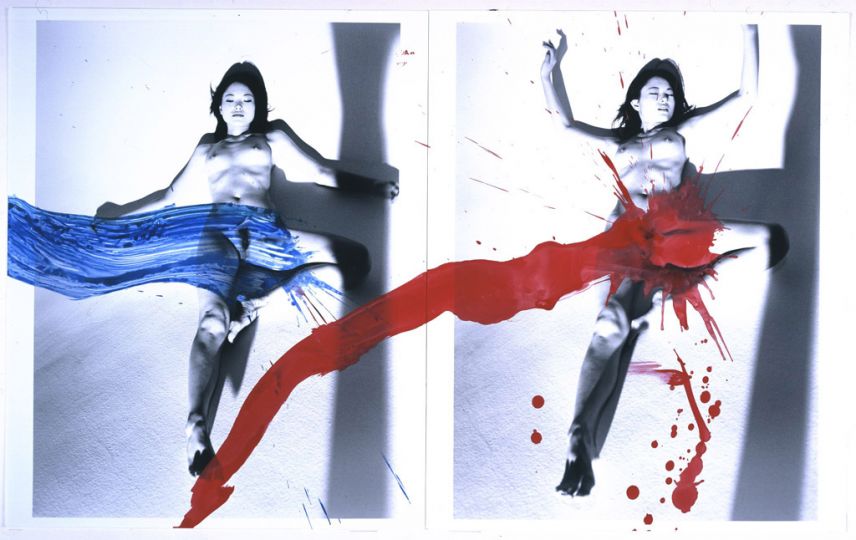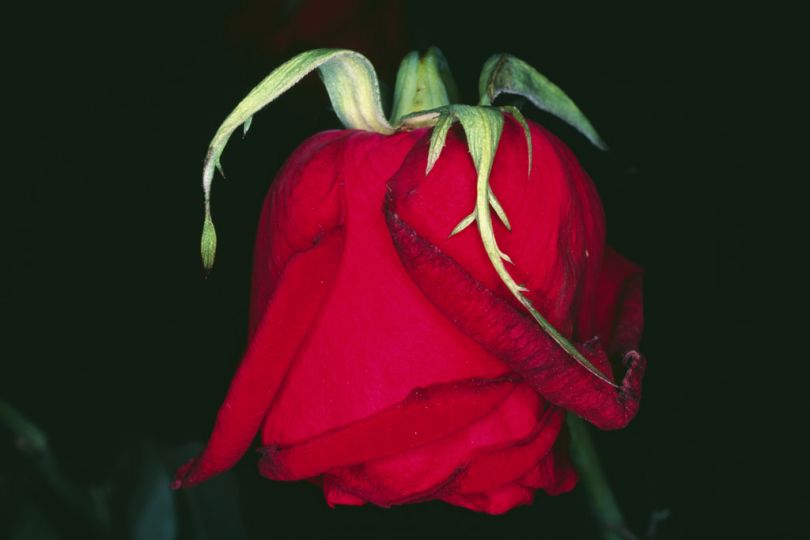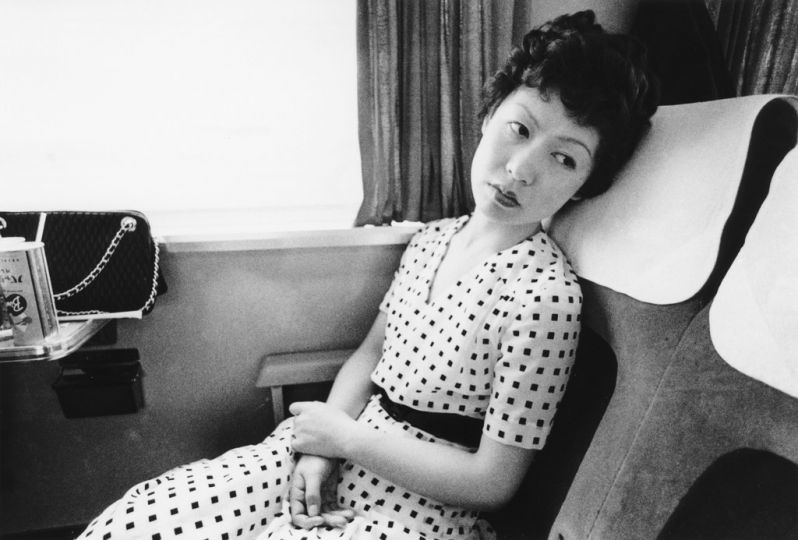Galerie &co119 is currently showing ‘Polanography’ by Nobuyoshi Araki, to coincide with the major retrospective of Araki’s work at Musée Guimet. The exhibition counts 132 pieces produced using Polaroids, a technique that played a key role in the artist’s work.
For this show, Araki took a series of his photographs and used them as his raw material. He cut his Polaroids in two and assembled them to form new composite images, thus creating a set of hybrid images caught between the themes of Eros and Thanatos (death), central to all his work. These ‘polanographies’ take an unusual approach as they explore the female shape, combining body and perspective.
The title of the series, ‘Polanography’, also illustrates Araki’s tendency to play on words. It is a contraction of ‘Polaroid’ and ‘pornography’ to form a construction that is phonetically very close to the pronunciation of the word ‘pornography’ in Japanese. So, just like the images themselves, Araki invented the term ‘polanography’ by cutting up and recomposing two words to create new meaning.
The fascination with altering the photographic object is found in several of the artist’s recent series, such as images partially blackened in the ‘Love on the Left Eye’ series reflecting his partial loss of sight, or the scratched negatives of images taken after the Fukushima nuclear catastrophe in March 2011.
The alternative titles assigned by Araki to this hybrid Polaroid series are Arakiri and Kekkai, revealing the importance the artist grants to tradition such as kinbaku, the traditional bondage practices, and the representations of the female body and genitalia in shunga, 19th-century Japanese erotic art.
Arakiri is a contraction of Araki and hara kiri, which literally means slicing the abdomen open and refers to the ritual suicide by disembowelment practised by the samurai. This was traditionally a male practice but with these images, Araki transposes it to women, making the sexual organs, rather than the abdomen, the centre of the body.
Kekkai refers to the sacred boundary created around the Japanese Buddhist temples to keep the profane outside world separate from the sanctuary of the temple. Araki translates this idea as the line that separates the two halves of each photograph, emphasising the idea of a confrontation of two bodies, two instants, two worlds.
Araki is one of the most prolific contemporary artists working with photography, and in ‘Polanography’, he reveals his ambition to continue to explore new approaches while remaining firmly rooted in Japanese tradition.
EXHIBITION
Polanography
Nobuyoshi Araki
From April 8th to June 25th, 2016
Galerie &co119
119, rue Vieille du Temple
75003 Paris
France
http://www.8c0119.com
ALSO
Araki
From April 13th to September 5th, 2016
Curators : Jérôme Neutres and Jérôme Ghesquière
Musée national des arts asiatiques Guimet
6, place d’Iéna
75116 Paris
France
http://www.guimet.fr





















